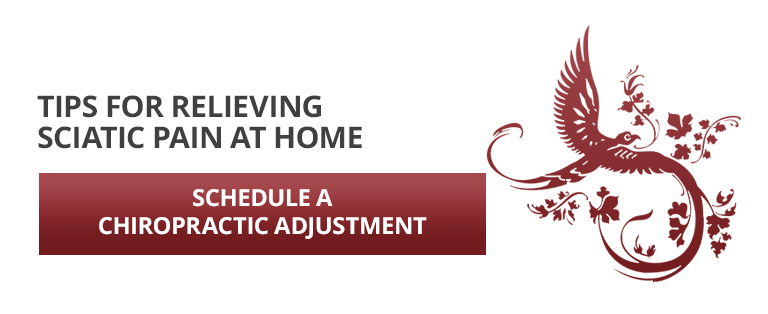Posts

3 Self-Care Techniques to Relieve Sciatic Nerve Pain, Part 1
If you’ve been keeping up with our recent blog posts, you have learned quite a bit about sciatica, one of the most common types of back pain affecting about 40 percent of people in the United States. In our two-part blog series, “What Is Sciatica?”, we spent time exploring this painful neuromuscular complaint, looking at what it is, where it occurs, what causes it to occur, the symptoms, and the most effective sciatic nerve pain treatments. Be sure to read these blogs to gain a better understanding of this type of pain, which can help prevent its onset.
Some of the most effective treatments for sciatica include routine chiropractic adjustments, spinal decompression therapy, acupuncture, and massage. Along with these noninvasive treatments, practicing self-care is a great way to manage your sciatic pain at home, at work, and on the go. Today, the Arne Wellness Center team will share a few self-care techniques that you can combine with chiropractic care and other treatments to enhance relief.
Three Ways to Relieve Sciatic Pain With Self-Care
Stand More
One of the top contributors to sciatic pain is prolonged sitting. Whether you sit at a computer for eight hours a day or you drive a vehicle for a living, sitting for long periods of time causes stress to build in your lumbar spine. Along with the pressure that is physically placed on your sciatic nerve from sitting, stress and tension can form in the supportive tissues of the spine, which can cause muscle spasms and inflammation to occur. When this happens, the sciatic nerve itself becomes irritated, which causes aches, soreness, and stiffness.
Tip: Try to stand for 10-20 minutes every hour. This can help get the blood flowing and the circulation going, which can restore oxygen and nutrients to tissues that have been inactive. What’s more, this can relieve pressure from the lower back.
Move Around
Inactivity and prolonged sitting cause tension and stiffness to build in the joints and muscles of the back. As a result, the tissues can react in a way to aggravates the sciatic nerve, which causes pain and discomfort. Movement, however, gets the circulation going to help reduce tension, spasm, stiffness, and stress in the supportive spinal tissues.
Tip: If you sit a lot at work, get up and take a quick walk around the office, go fill up your water bottle, or take a stroll outside. This is not only good for relieving pressure from the lumbar spine, but is also a great way to keep the muscles and joints flexible yet stable to better protect the spine.
Practice Good Posture
Whether you sit or stand for extended periods of time, it’s essential to practice good posture to protect the joints and soft tissues in the spine. Doing so can reduce the pressure on the lower back and sacrum while also alleviating tension in the areas of the back when poor posture can cause pain.
Tip: If you feel yourself starting to slouch, sit up straight, take three to five deep breaths, and practice holding a stronger core. If you sit a lot, invest in a good lumbar support system to keep your posture in a healthy position.
Talk to Your Littleton Chiropractor
Implementing these simple self-care techniques is a great way to relieve sciatic nerve pain in conjunction with other pain relief therapies like chiropractic. If you have any questions or concerns, please feel free to reach out to Arne Wellness Center to schedule an appointment with your Top Rated Local® chiropractor in Littleton.

